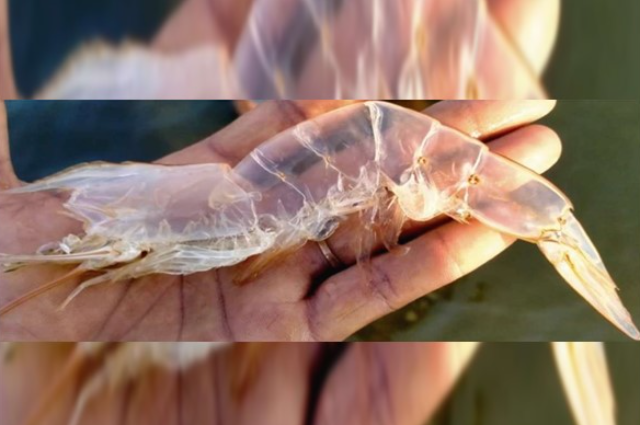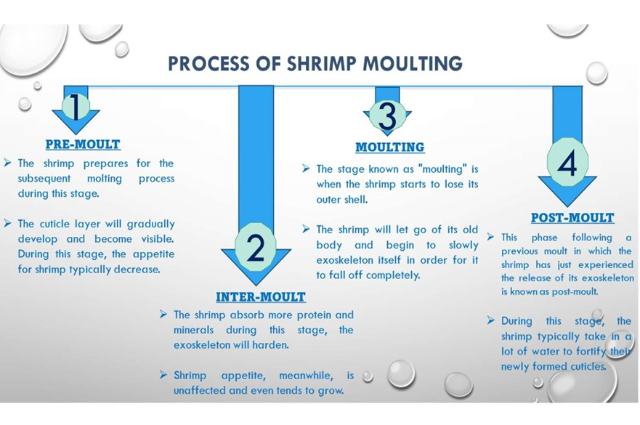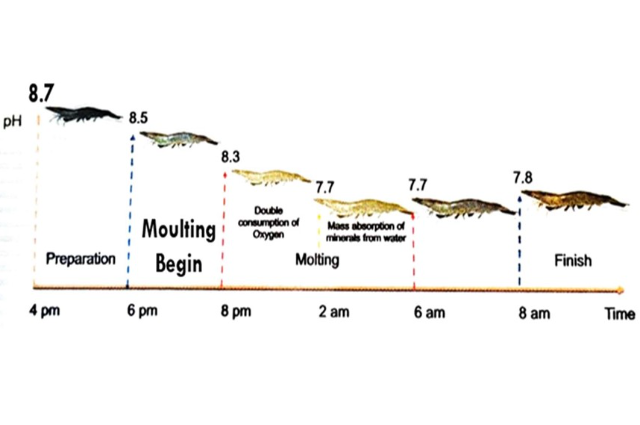
It is well known in shrimp farming that moulting is a necessary condition for shrimp growth. The process of replacing an old shrimp's shell with a new one is called moulting. Shrimp's exoskeleton, or external skeleton, restricts the amount of development they can go through, just like all other crustaceans. They must moult, or completely regenerate their carapace, or shell, to grow.

HOW TO PROMOTE MOULTING IN SHRIMP?
- In relation to the physiological cycle, induction triggers, behavioural and compositional changes, components for successful moulting, and potential moulting management strategies, the significance of moulting for growth in farmed shrimp is reviewed.
- Throughout their life cycle, shrimp repeatedly moult to increase in size and weight. Therefore, to increase shrimp productivity and quality when harvested, farmers always want to encourage moulting. Moreover, uniform moulting of shrimp contributes to increased resistance against disease-causing bacteria and viruses.
- But shrimp require a wide range of nutrients, dissolved oxygen, minerals, and other elements for a successful moulting process. Without these, the shrimp will grow slowly and stunt because of unfavourable farming conditions. This article will list several reasons why shrimp moult slowly and suggest some excellent products to aid in the moulting process.
MAJOR FACTORS AFFECTING SHRIMP pH Value:
An essential environmental component influencing the moulting process is pH. The pH should not be higher than 8.4 for shelling shrimp. pH 7.8–8.2 is the ideal range for Vannamei shrimp moult. There will be an increase in toxicity as the pH rises. To maintain the ALKALINITY OF 150–200 mg/litre, we routinely add lime or Sodium Bicarbonate in water to stabilize the pH level.

The DO (Dissolved Oxygen) Value:
Shrimps require twice as much dissolved oxygen during the moulting stage. To fulfil the goal of breathing in dissolved oxygen from the air to replenish the dissolved oxygen in the water, we should continuously operate aeration equipment during night-time. Verify that there is sufficient dissolved oxygen in the water to facilitate the proper moulting of the shrimp. We routinely add DO powder & tablets to increase the DO level. The DO value must be maintain more than 6 ppm for proper moult.
Minerals:
The performance of shrimp growth depends on minerals, particularly in ponds where the mineral content is lower than in the natural environment. The pond's dissolved mineral content plays a significant role in the shrimp's ability to swiftly grow new shells. In actuality, the dissolved mineral content increases with salinity. Furthermore, in ponds with high densities, a lot of shrimp clam shell at the same time, which causes the environment's mineral content to drop dramatically.
In shrimp farming, two types of minerals are utilized:
- Macro minerals: It contains minerals supplied as compounds, which are typically dissolved in water. Examples of these compounds are Calcium, Phosphorus, Sodium, Potassium, Magnesium, and sulphur.
- Trace minerals: Iron, Manganese, Copper, Zinc, Cobalt.
- Nutrients: Minerals are essential molecules for algae. The shrimp may suddenly die in their moulting shells after one to three days if the pond's algae density is extremely high. This would worsen the culture environment and increase the chance that the shrimp will infect harmful bacteria and gases.
- Pathogens & Bacteria: For the shrimp to grow during their moult, the water quality must be higher. Shrimp that are just moulting are more susceptible to infections, which makes them move more slowly and consume less food.
Reducing the number of pathogens in the pond, especially a bottom reform, and improving the water quality prior to the moulting are the best ways to safeguard the shrimp. To reduce the pathogens in pond environment, Beneficial bacteria must be inoculate in pond environment by applying Probiotics.
After removing their shells, shrimps will start a new cycle of nutrient accumulation, so the shrimp feed needs to be supplemented with vitamins and proteins. Additionally, using premium feed will stop abrupt changes in the environment that affect shrimp and assist the body in returning to its ideal state.
